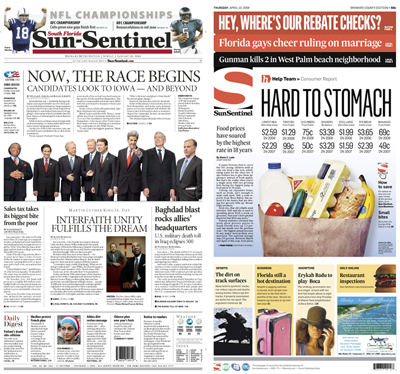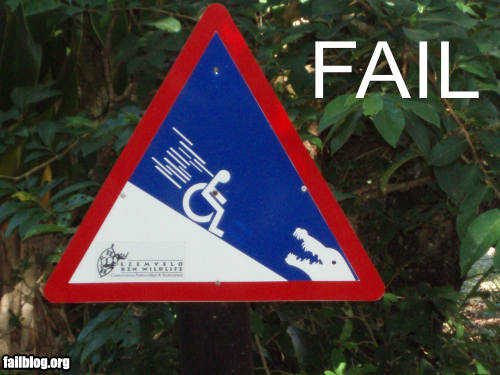The Minneapolis Star Tribune has canceled its Associated Press subscription, and it probably won’t be the last paper to do so. The Strib is one of several papers that have complained loudly about the AP’s pricing policies, which they say constitute an onerous tax at a time when member newspapers are already bleeding red ink. Now it’s given the wire service the required two-year notice of its intention to cancel.
More papers are likely to follow. In Ohio, a group of dailies has banded together to share stories, a move driven in part by a desire to cut dependence on the AP. Many papers rely on the wire service to deliver national and international coverage, but with the recent push to go “hyper-local,” the need for such information is declining. Readers already get most of that stuff online anyway, and with its liberal syndication agreements with various online portals, the AP is actually competing with its member companies.
If newspapers begin opting out of their AP subscriptions, it could have interesting ripple effects for the AP and its members. Alan Mutter has noted that the AP gets two-thirds of its stories from member papers. If it loses those sources, then the wire service will have to invest in its own staff to make up for the shortfall. That means the AP has to make a choice between cutting its license fees or losing members and the content that drives its other licensing arrangements. However, as David Brauer notes, “If AP gets less cash and copy from the Strib and cuts its local presence, Minnesota’s news ecosystem could take a big hit. The wire service’s copy fleshes out local papers big and small; a diminished AP weakens a key line of defense for cash-strapped newsrooms.”
In short, the AP is engaged in a stare-down with its member newspapers. Will more defections like that of the Star Tribune force it to blink?
The industry’s dire financial situation has got newspapers thinking creatively about how to avoid cutting into bone. Editor & Publisher continues its recent reporting on this issue, focusing on creative content-sharing and partnership agreements that many papers are hatching to deliver quality information to readers while abandoning traditional rivalries. Adversity is the mother of invention, and some editors are reporting that by abandoning their “not invented here” bias, they’re minimizing the impact of layoffs and cost cuts.
Miscellany
Almost two-thirds of the top 30 newspaper websites had double-digit percentage increases in year-over-year unique traffic in July, according Nielsen Online. Ottaway Newspapers led the good news parade with a gain of 167%. The Los Angeles Times was up 66% and The Wall Street Journal Online advanced 94%. Editor & Publisher didn’t try to explain the dramatic improvements, but the combination of high gas prices driving more at-home “staycations” along with interest in the presidential campaign and Summer Olympics probably all played a role.
University of South Carolina journalism professor Ernest Wiggins was curious about how newspaper websites handle comments from readers, so he looked at 10 of the largest titles to see if there was any consensus. His findings: not really. All of the newspapers he reviewed post some language intended to keep discussions civil, and a minority actually screen contributions. Beyond that, practices range from the New York Daily News‘ genteel “Be nice” plea to the Los Angeles Times‘ draconian warning that “A VIOLATION OF THESE POSTING RULES MAY BE REFERRED TO LAW ENFORCEMENT AUTHORITIES.” He cites advice from two Poynter faculty as a rule of thumb: encourage comments, state the purpose of the forum but don’t threaten people.
Alan Mutter says the distressed financial condition of American newspapers could make them appealing buyout targets to foreign interests with a political agenda. He focuses, in particular, on Arab and Asian governments that are flush with cash in overseas investment funds and that could benefit from having bully pulpits in the US market. The Unification Church-owned Washington Times set the precedent by using a newspaper to champion its conservative political causes and there are no rules that would prevent other overseas buyers from doing the same thing. At current valuations, newspaper companies would be a rounding error for some of these funds, which boast assets of as much as $400 billion. If overseas interests bought big into the US market, it could lead us back to the early days of newspapering, when publications typically took strong positions on the issues and made no effort to deliver “just the facts” journalism, he says.
The Honolulu Advertiser is again moving to cut headcount, even as it pursues rocky negotiations with the Newspaper Guild. The company will eliminate 27 positions at its Pacific Media Publications community newspaper group and consolidate seven community newspapers into three. The company had earlier cut 54 jobs at the Advertiser. A Guild spokesman said the move “certainly does not reflect a move toward trying to get a contract.”
The Chicago Sun-Times is seeking more staff cuts on top of the 40 positions eliminated earlier this year as part of a $50 million expense reduction campaign. The editor didn’t specify a reduction target, but said the cuts are driven by the “awful” advertising climate. Two weeks ago, parent Sun-Times Media Group announced that it was outsourcing its inbound classified advertising operations after reporting a dismal $38 million loss in the second quarter.
Sam Zell says Tribune Co. will be able to cover its debts for at least the next seven years. Buried in a Bloomberg story about Zell’s forecasts for the real estate market is the tycoon’s comment that “We don’t have any real maturities that aren’t covered until 2015.” Zell also said he expects to sell the Chicago Cubs and Wrigley field later this year for “a lot” of money.
At Tribune Co.’s namesake newspaper, social media has come of age. Huffington Post’s Todd Andrlik writes that a four-person social media team has come up with strategies to monitor news reports on Twitter, establish communities on Facebook and generally improve its reader interaction. A recent page three story about a bomb threat at Daley Center bomb originated as a Twitter message to Colonel Tribune, the paper’s online avatar that’s a throwback to colorful onetime owner Col. Robert R. McCormick. Sharing content through social networks has also resulted in an immediate 8% uptick in site traffic.
CNN has joined with the free Metro papers in New York, Boston and Philadelphia to deliver columns by CNN correspondents in select Metro editions every Friday for 12 weeks. Their stories began appearing last Friday. The deal expands an existing agreement that provides 70 Metro editions with content produced by CNN exclusively for Metro.




